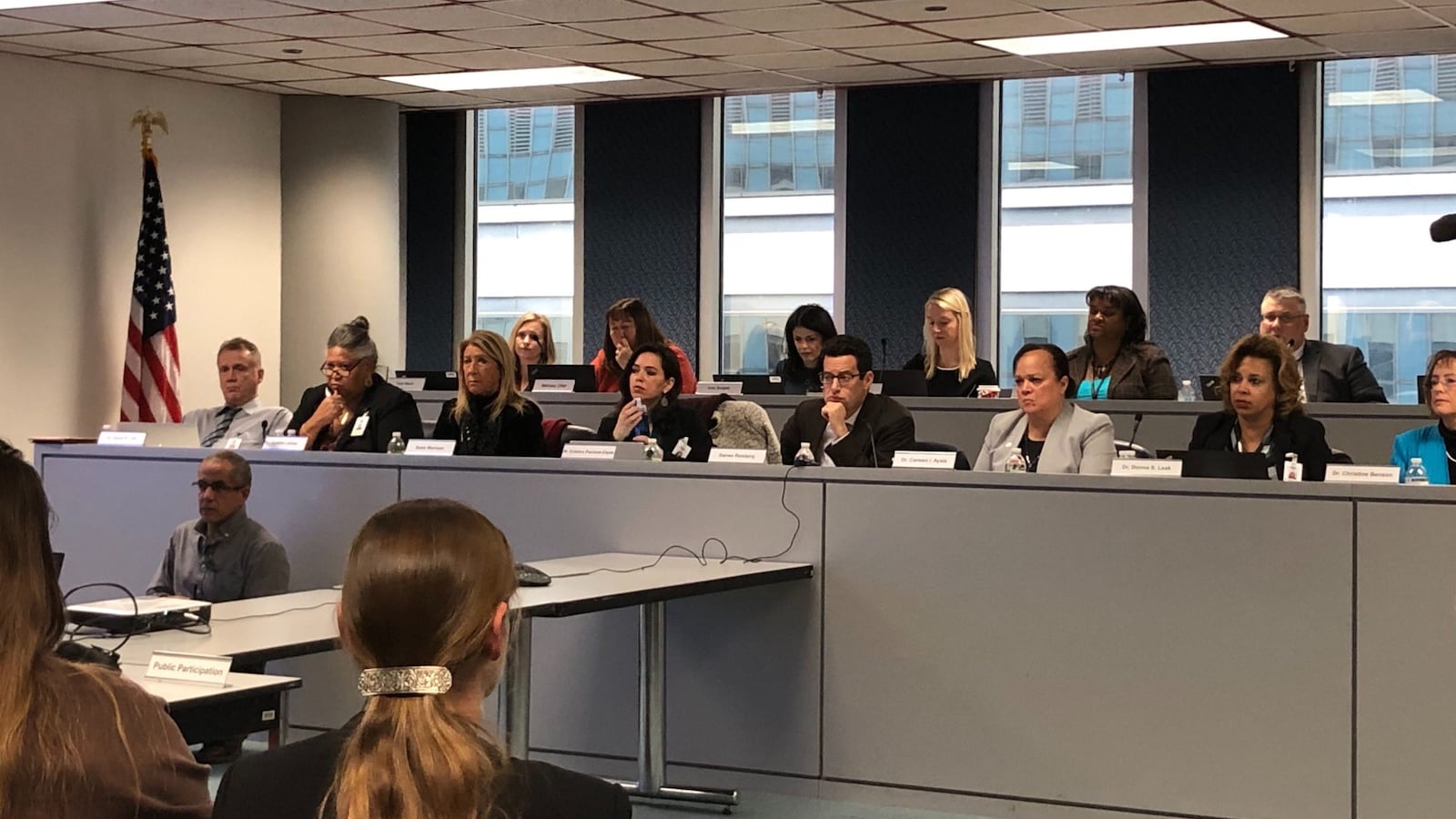In a year when the governor has called on every department to pare down spending, the Illinois State Board of Education wants to bump up the education budget by 8.6%, including infusions into state testing, early childhood education, and teacher training and hiring.
The board accepted state schools Superintendent Carmen Ayala’s ask for a $760 million boost. The budget request requires approval by the governor and legislature. It is not certain how the state would fund an increase.
Gov. J.B. Pritzker has requested all agencies, including the state board, to cut their budgets by 6.5% to help cover more than $6 billion in unpaid bills, some left from previous years.
The vast majority of the state board’s $9.64 billion request would go to school districts — $7.7 billion, or a 7% increase. The board also wants to boost the early childhood education block grant by $100 million, less than what advocates have sought.
The board proposes $1.1 million for a new department that would help schools end practices of restraint and seclusion, which were detailed in a ProPublica investigation. The board also wants $10 million more for state assessments, to total $57 million, including a revamp of the annual Illinois Assessment for Readiness.
To address a dire teacher shortage, the board seeks $44 million for recruiting bilingual educators, mentoring new teachers and principals, offering a path for career and technical education teachers, and other investments into teachers. Illinois has 1,800 teacher vacancies this school year.
During Wednesday’s board meeting, Ayala said the investment in both long- and short-term strategies addressed the board’s interest in elevating the education profession and alleviating shortages. “This is not something we are going to eliminate within one or two years,” she said.
Each year the board makes a request that significantly exceeds the actual education budget that the legislature eventually passes. The Illinois General Assembly and governor will consider the board’s proposals in coming weeks.
Here’s what teacher-focused programs and investment areas the board wants to boost this coming fiscal year:
$15 million more for Golden Apple
One education non-profit that could emerge a winner would be Golden Apple, a company that recruits and provides classroom training and mentorships for teacher hopefuls.
The board wants to add $15 million to support a college scholarship and summer training program for would-be teachers. Participants in what’s known as the Golden Apple Scholars of Illinois would have to commit to teaching for five years in a high-poverty or academically low-ranking school.
The board wants to support a 15-month residency program for people switching careers to teaching. Participants would be paid $30,000 and must then teach in southern, central or western Illinois for four years.
$5 million to find more teachers endorsed for career and technical education
Of $50 million dedicated to vocational education, the state board would spend 20% in grants to districts to build a pipeline for teachers in career and technical education.
$9 million to retain teachers and principals through mentoring programs
Of a proposed $9 million, $8 million will go toward teacher mentorship, and $1 million for principals. That money would be allocated through competitive grants to districts for mentoring programs. The program aims to mentor 6,600 first-year teachers.
$5 million in new funds for teachers of color
The state board wants $5 million to help diversify the teaching corps, primarily by recruiting bilingual teachers.
Double the funding for Teach for America to $2 million
The board wants to double the funding Teach for America, an alternative teacher training program that assigns graduates of top-tier colleges to classrooms in low-income communities..
The group has focused its Illinois work in Chicago, but is now moving into North Chicago, a suburb near Waukegan. This board seeks to add 80 to 100 new educators in Illinois schools.
$1 million to convince high school students to become teachers
The board would create 10 regional programs for high school students to shadow teachers and practice lesson planning. Districts with the highest teacher vacancy rates would get priority in the program, which is supported by two teacher unions and a professional organization.

